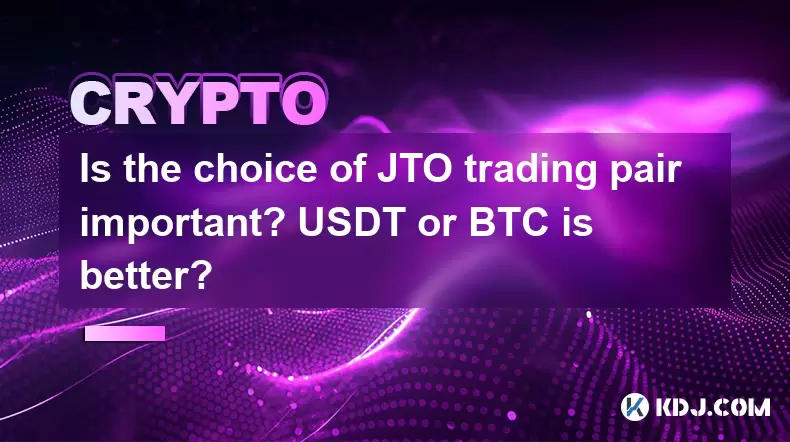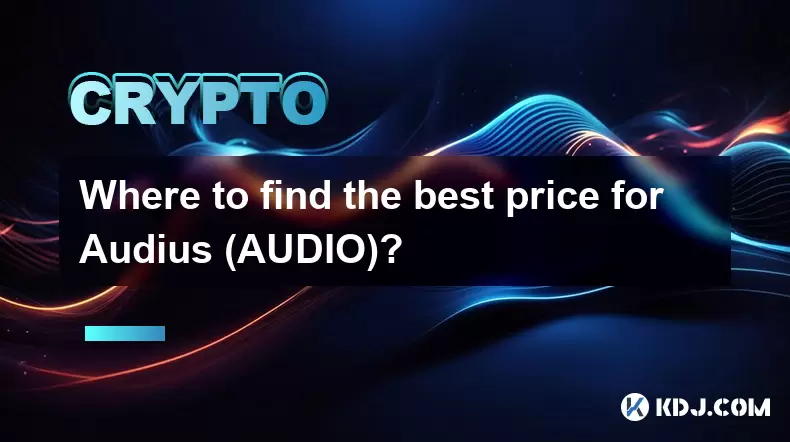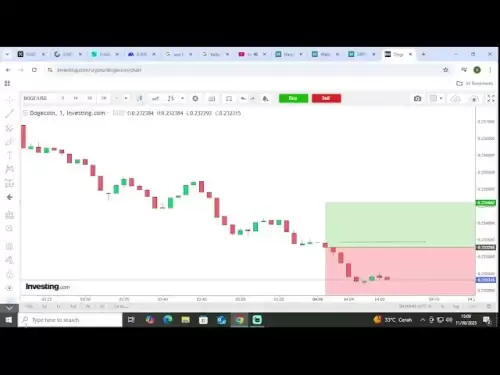-
 Bitcoin
Bitcoin $120100
1.16% -
 Ethereum
Ethereum $4329
2.25% -
 XRP
XRP $3.192
-0.22% -
 Tether USDt
Tether USDt $1.000
-0.01% -
 BNB
BNB $805.2
0.47% -
 Solana
Solana $178.7
-1.85% -
 USDC
USDC $0.9998
0.00% -
 Dogecoin
Dogecoin $0.2305
-1.62% -
 TRON
TRON $0.3445
1.17% -
 Cardano
Cardano $0.7940
-1.28% -
 Hyperliquid
Hyperliquid $44.44
-1.20% -
 Chainlink
Chainlink $21.86
-2.42% -
 Stellar
Stellar $0.4423
-0.15% -
 Sui
Sui $3.728
-3.84% -
 Bitcoin Cash
Bitcoin Cash $584.8
2.19% -
 Hedera
Hedera $0.2524
-2.87% -
 Ethena USDe
Ethena USDe $1.001
-0.02% -
 Avalanche
Avalanche $23.66
-0.78% -
 Litecoin
Litecoin $124.5
0.39% -
 Toncoin
Toncoin $3.399
1.77% -
 UNUS SED LEO
UNUS SED LEO $9.002
-0.44% -
 Shiba Inu
Shiba Inu $0.00001327
-2.10% -
 Uniswap
Uniswap $11.42
2.58% -
 Polkadot
Polkadot $3.957
-2.50% -
 Cronos
Cronos $0.1696
4.50% -
 Dai
Dai $1.000
0.00% -
 Ethena
Ethena $0.8139
3.04% -
 Bitget Token
Bitget Token $4.442
-0.38% -
 Monero
Monero $271.2
2.93% -
 Pepe
Pepe $0.00001168
-2.91%
Is the choice of JTO trading pair important? USDT or BTC is better?
Choosing between USDT and BTC for trading JTO impacts strategy due to differences in stability, potential returns, and liquidity; assess your risk tolerance and market conditions.
May 07, 2025 at 05:00 pm

Is the Choice of JTO Trading Pair Important? USDT or BTC is Better?
When trading cryptocurrencies, one of the critical decisions traders face is choosing the right trading pair. For those interested in trading JTO (Jito), the choice between using USDT (Tether) or BTC (Bitcoin) as the trading pair can significantly impact their trading strategy and outcomes. This article delves into the importance of selecting the appropriate trading pair for JTO and compares the advantages and disadvantages of using USDT versus BTC.
Understanding JTO and Its Trading Pairs
JTO, or Jito, is a cryptocurrency that operates on the Solana blockchain, focusing on providing a decentralized platform for staking and governance. When trading JTO, users typically have the option to pair it with either USDT or BTC. USDT is a stablecoin pegged to the US dollar, offering stability and ease of use, while BTC is the original cryptocurrency, known for its volatility and potential for high returns.
The Importance of Choosing the Right Trading Pair
The choice of trading pair is crucial because it affects various aspects of trading, including liquidity, volatility, and the overall trading strategy. Liquidity refers to the ease with which a trader can buy or sell an asset without causing a significant price change. Volatility is the degree of variation in trading prices over time, which can impact the potential for profit or loss. The trading pair chosen can also influence the trading strategy, as different pairs may be better suited for different types of trading, such as day trading or long-term holding.
Advantages and Disadvantages of Using USDT as a Trading Pair for JTO
USDT, being a stablecoin, offers several advantages when used as a trading pair for JTO. One of the primary benefits is stability. Since USDT is pegged to the US dollar, it experiences minimal price fluctuations, making it an ideal choice for traders who prefer a more predictable trading environment. This stability can be particularly beneficial for those who are new to trading or those who wish to minimize risk.
However, there are also disadvantages to using USDT. One significant drawback is the potential for lower returns. Because USDT is stable, the opportunities for significant gains from price movements are limited. Additionally, fees associated with trading USDT pairs can sometimes be higher than those for other pairs, which can eat into profits.
Advantages and Disadvantages of Using BTC as a Trading Pair for JTO
BTC, on the other hand, offers a different set of advantages and disadvantages. One of the main benefits of using BTC as a trading pair for JTO is the potential for higher returns. BTC is known for its volatility, which can lead to significant price movements and, consequently, higher potential profits. This makes it an attractive option for traders who are comfortable with higher risk and are looking to capitalize on market fluctuations.
However, the volatility of BTC can also be a disadvantage. The price of BTC can experience significant swings, which can lead to substantial losses if the market moves against the trader. Additionally, liquidity can sometimes be an issue with BTC pairs, especially during times of high market volatility, which can make it more challenging to execute trades at desired prices.
Comparing USDT and BTC as Trading Pairs for JTO
When comparing USDT and BTC as trading pairs for JTO, it's essential to consider the trader's individual goals and risk tolerance. USDT is generally better suited for traders who prioritize stability and are looking to minimize risk. It's an excellent choice for those who are new to trading or those who prefer a more conservative approach.
On the other hand, BTC is more suitable for traders who are comfortable with higher risk and are looking to maximize potential returns. It's an ideal choice for experienced traders who are adept at navigating volatile markets and can take advantage of significant price movements.
Practical Considerations for Choosing a Trading Pair
When deciding between USDT and BTC as a trading pair for JTO, traders should also consider practical factors such as fees, liquidity, and market conditions. Here are some steps to help traders make an informed decision:
- Assess your risk tolerance: Determine how much risk you are willing to take. If you prefer a more stable trading environment, USDT may be the better choice. If you are comfortable with higher risk and potential for higher returns, BTC might be more suitable.
- Evaluate the fees: Compare the trading fees associated with USDT and BTC pairs. Sometimes, the fees can vary significantly between different exchanges and can impact your overall profitability.
- Check liquidity: Ensure that the trading pair you choose has sufficient liquidity. Higher liquidity can make it easier to enter and exit trades at desired prices.
- Monitor market conditions: Keep an eye on the overall market conditions. During times of high volatility, BTC pairs may offer more opportunities for profit, but they also come with increased risk.
Frequently Asked Questions
Q: Can I switch between USDT and BTC trading pairs for JTO on the same exchange?
A: Yes, most cryptocurrency exchanges allow users to switch between different trading pairs for the same cryptocurrency. However, you should be aware of any fees associated with switching pairs and ensure that the pair you switch to has sufficient liquidity.
Q: How does the choice of trading pair affect my tax obligations?
A: The choice of trading pair can impact your tax obligations, as different jurisdictions may have different rules regarding the taxation of cryptocurrencies. It's essential to consult with a tax professional to understand how trading JTO with USDT or BTC may affect your tax situation.
Q: Are there other trading pairs available for JTO besides USDT and BTC?
A: Yes, depending on the exchange, you may find other trading pairs available for JTO, such as ETH (Ethereum) or other stablecoins like USDC (USD Coin). The availability of these pairs can vary, so it's important to check with your chosen exchange.
Q: How can I determine which trading pair is more liquid for JTO?
A: To determine which trading pair is more liquid for JTO, you can check the order book depth on your chosen exchange. A deeper order book indicates higher liquidity, making it easier to buy and sell JTO at desired prices. Additionally, you can look at trading volume data to gauge the liquidity of different pairs.
Disclaimer:info@kdj.com
The information provided is not trading advice. kdj.com does not assume any responsibility for any investments made based on the information provided in this article. Cryptocurrencies are highly volatile and it is highly recommended that you invest with caution after thorough research!
If you believe that the content used on this website infringes your copyright, please contact us immediately (info@kdj.com) and we will delete it promptly.
- Bitcoin, Solana, MAGACOIN FINANCE: Navigating the 2025 Crypto Landscape
- 2025-08-12 00:30:13
- Cardano, ADA Holders, and Layer Brett: A Meme Coin with Real Utility?
- 2025-08-12 00:50:12
- Bitcoin, Michael Saylor, and Savvy Investors: A New Era of Digital Assets
- 2025-08-12 00:30:13
- Crypto Presales in 2025: Spotting the Next Big Thing with Analyst Insights
- 2025-08-12 00:50:12
- Cloud Mining in 2025: Bitcoin, Litecoin, and the Quest for Passive Income
- 2025-08-12 00:55:32
- Token Security, Agentic AI, Cybersecurity Guide: Navigating the New Frontier
- 2025-08-11 23:00:12
Related knowledge

How to purchase Aragon (ANT)?
Aug 09,2025 at 11:56pm
Understanding Aragon (ANT) and Its PurposeAragon (ANT) is a decentralized governance token that powers the Aragon Network, a platform built on the Eth...

Where to trade Band Protocol (BAND)?
Aug 10,2025 at 11:36pm
Understanding the Role of Private Keys in Cryptocurrency WalletsIn the world of cryptocurrency, a private key is one of the most critical components o...

What is the most secure way to buy Ocean Protocol (OCEAN)?
Aug 10,2025 at 01:01pm
Understanding Ocean Protocol (OCEAN) and Its EcosystemOcean Protocol (OCEAN) is a decentralized data exchange platform built on blockchain technology,...

Where can I buy UMA (UMA)?
Aug 07,2025 at 06:42pm
Understanding UMA and Its Role in Decentralized FinanceUMA (Universal Market Access) is an Ethereum-based decentralized finance (DeFi) protocol design...

How to buy Storj (STORJ) tokens?
Aug 09,2025 at 07:28am
Understanding Storj (STORJ) and Its Role in Decentralized StorageStorj is a decentralized cloud storage platform that leverages blockchain technology ...

Where to find the best price for Audius (AUDIO)?
Aug 11,2025 at 04:01pm
Understanding the Basics of Ethereum StakingEthereum staking refers to the process of locking up ETH tokens to support the security and operations of ...

How to purchase Aragon (ANT)?
Aug 09,2025 at 11:56pm
Understanding Aragon (ANT) and Its PurposeAragon (ANT) is a decentralized governance token that powers the Aragon Network, a platform built on the Eth...

Where to trade Band Protocol (BAND)?
Aug 10,2025 at 11:36pm
Understanding the Role of Private Keys in Cryptocurrency WalletsIn the world of cryptocurrency, a private key is one of the most critical components o...

What is the most secure way to buy Ocean Protocol (OCEAN)?
Aug 10,2025 at 01:01pm
Understanding Ocean Protocol (OCEAN) and Its EcosystemOcean Protocol (OCEAN) is a decentralized data exchange platform built on blockchain technology,...

Where can I buy UMA (UMA)?
Aug 07,2025 at 06:42pm
Understanding UMA and Its Role in Decentralized FinanceUMA (Universal Market Access) is an Ethereum-based decentralized finance (DeFi) protocol design...

How to buy Storj (STORJ) tokens?
Aug 09,2025 at 07:28am
Understanding Storj (STORJ) and Its Role in Decentralized StorageStorj is a decentralized cloud storage platform that leverages blockchain technology ...

Where to find the best price for Audius (AUDIO)?
Aug 11,2025 at 04:01pm
Understanding the Basics of Ethereum StakingEthereum staking refers to the process of locking up ETH tokens to support the security and operations of ...
See all articles

























































































